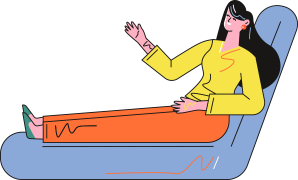 3
3
Chen Si
 Pediatrics
Pediatrics
About me
Chen Si, Pediatrician at Changchun University of Chinese Medicine Affiliated Hospital.
Proficient in diseases
Common childhood illnesses include fever, cough, pneumonia, asthma, and diarrhea.

Voices

How to care for children with roseola
Roseola in infants generally does not require special treatment. It is important to control body temperature promptly to prevent it from getting too high or rising too quickly, which could lead to febrile convulsions. Skin rashes usually appear after the fever subsides, typically in the order of the forehead and face, torso, and extremities. These rashes are neither painful nor itchy, but they might cause irritability in children. There is no need for additional medicated creams for the rashes to prevent further skin issues caused by medications. Dietary recommendations include light, easily digestible food, and there are no specific foods that need to be avoided. Normal bathing and keeping warm to prevent catching a cold are also advised, and normal outdoor activities do not adversely affect children with roseola.

How to regulate a child who often catches a cold?
Children often catch colds due to poor immunity. To improve this situation, it is necessary to enhance their physique. Along with increasing outdoor physical exercises, it is also crucial to ensure sufficient sleep to support normal physical development and boost metabolism. Nutritionally, it's important to maintain a balanced diet, ensuring the intake of high-quality proteins like fish, shrimp, eggs, and milk weekly, and consuming plenty of vegetables and fruits. Additionally, supplementing with trace elements such as calcium, iron, and zinc may be appropriate. In severe cases, oral medications to boost immunity can be taken, but this is not a permanent solution.

Is pediatric myocarditis serious?
The severity of myocarditis in children needs to be assessed by considering the child's clinical symptoms and corresponding clinical examinations comprehensively. Common clinical symptoms include chest tightness, fatigue, shortness of breath, etc. Most children have a history of upper respiratory tract infection before the symptoms appear. It is necessary to conduct routine blood tests, myocardial enzymes, troponin, myocardial antibodies, viral antibodies, electrocardiograms, and other relevant physicochemical examinations to further clarify the condition. Patients with mild symptoms and roughly normal laboratory results can improve on their own with rest. If there are clinical symptoms such as chest tightness, fatigue, shortness of breath, and related physicochemical examinations show abnormal changes, it is necessary to use medication to nourish the myocardium. During treatment, rest is advised, reduce fatigue, maintain emotional stability, and generally, the symptoms can improve within 10 to 15 days. For more severe cases, the treatment period may need to be extended accordingly.

 Subscribe
Subscribe

